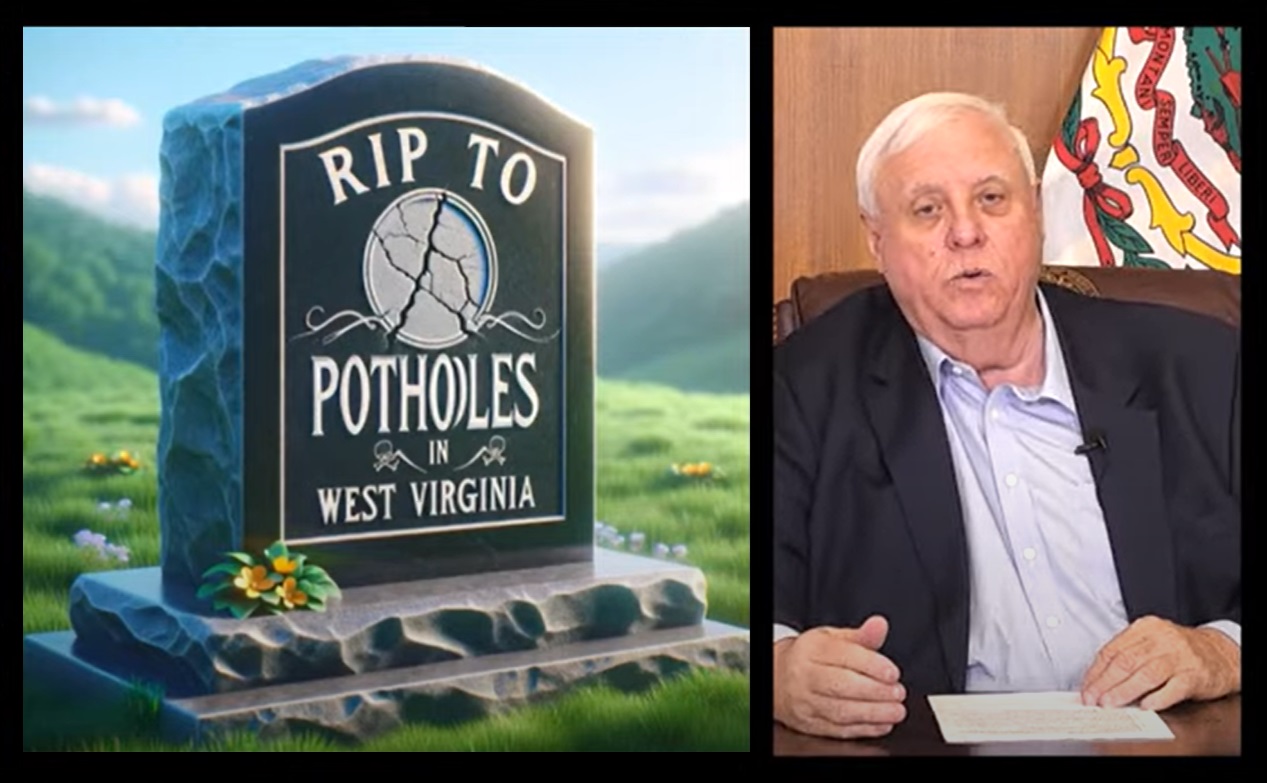With clear weather on the horizon, Gov. Jim Justice said that he will launch an “all-out assault” on potholes, with goals to repair the worst on state roadways in the week ahead.
Justice announced the initiative, dubbed “Operation RIP Potholes,” in a Wednesday press briefing, with the AI-generated graphic of a headstone beside him on the livestream. He accredited the move toward road repair to the upcoming clear weather, and the winter storm that exacerbated road damage earlier this month.
Typically, West Virginia asphalt plants close for the winter because it is difficult to fill potholes in freezing conditions.
But Justice said the clear weather presents an opportunity for the state. He partnered with an asphalt plant in Putnam County, which agreed to temporarily reopen for the week or so ahead to repair severe road damages.
Justice has also made arrangements with asphalt plants in Princeton and Morgantown to join the project beginning Feb. 5, according to a Wednesday press release.
The state is currently patching potholes with hot asphalt mix in 10 West Virginia counties — Boone, Cabell, Clay, Kanawha, Lincoln, Logan, Mason, Mingo, Putnam and Wayne counties, specifically — according to Jake Bumgarner, operations division director for the West Virginia Department of Highways. Bumgarner delivered an update on Justice’s project during the press briefing.
Additionally, Bumgarner said that the state is working to fill potholes with cold mix asphalt in all 55 counties. Cold mix asphalt is a cheaper, less durable material typically used as a short-term pothole fix.
Justice added that this winter he experienced first-hand the dangers posed by potholes.
“Just the other day… as I was coming down the turnpike, there was a series of four or five (potholes) and they were really bad,” Justice said. “It could cause big-time wrecks.”
Potholes can form when freezing road conditions are followed by sudden spells of warmth, like last week’s winter storm.
“That freeze-thaw cycle is heck on our roads,” Bumgarner said.
With climate change raising temperatures statewide, researchers say these conditions are likely to continue in years ahead. For now, Justice said his administration is doing what it can to address potholes on a case-by-case basis.
“I know that they’re tough on your vehicles, and we’re trying,” he said. “We’re absolutely trying, and we’re going to try even harder.”
